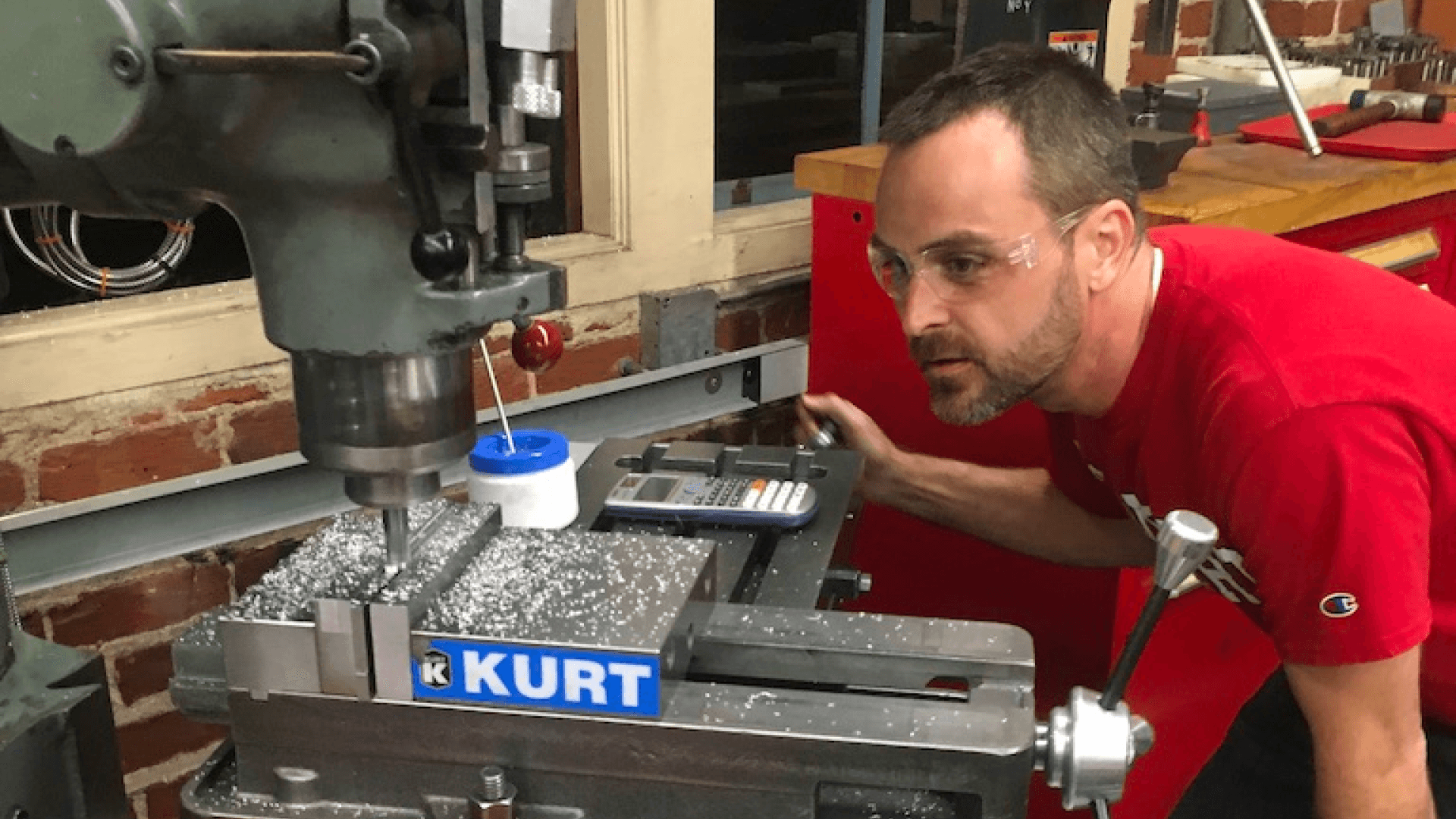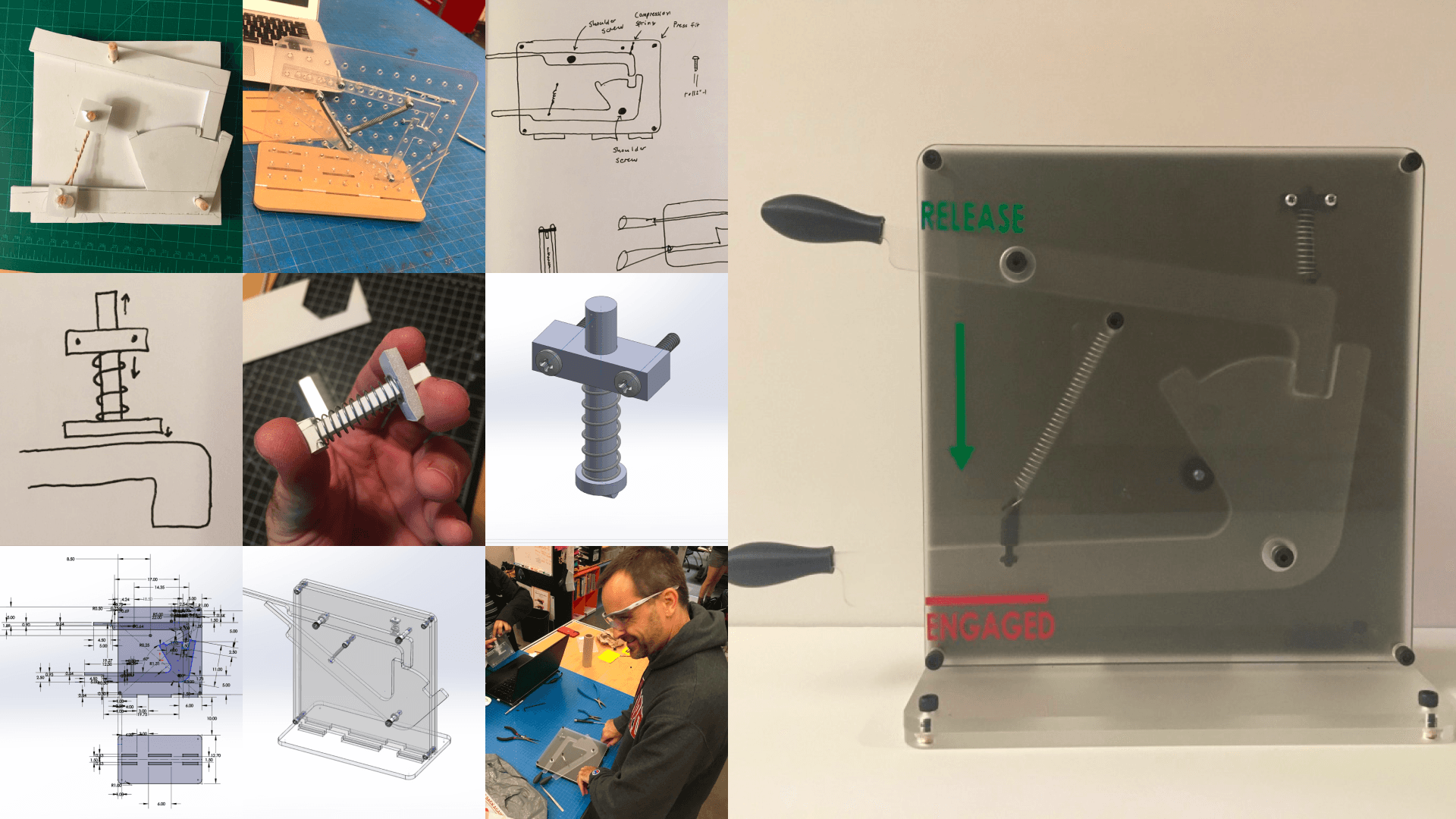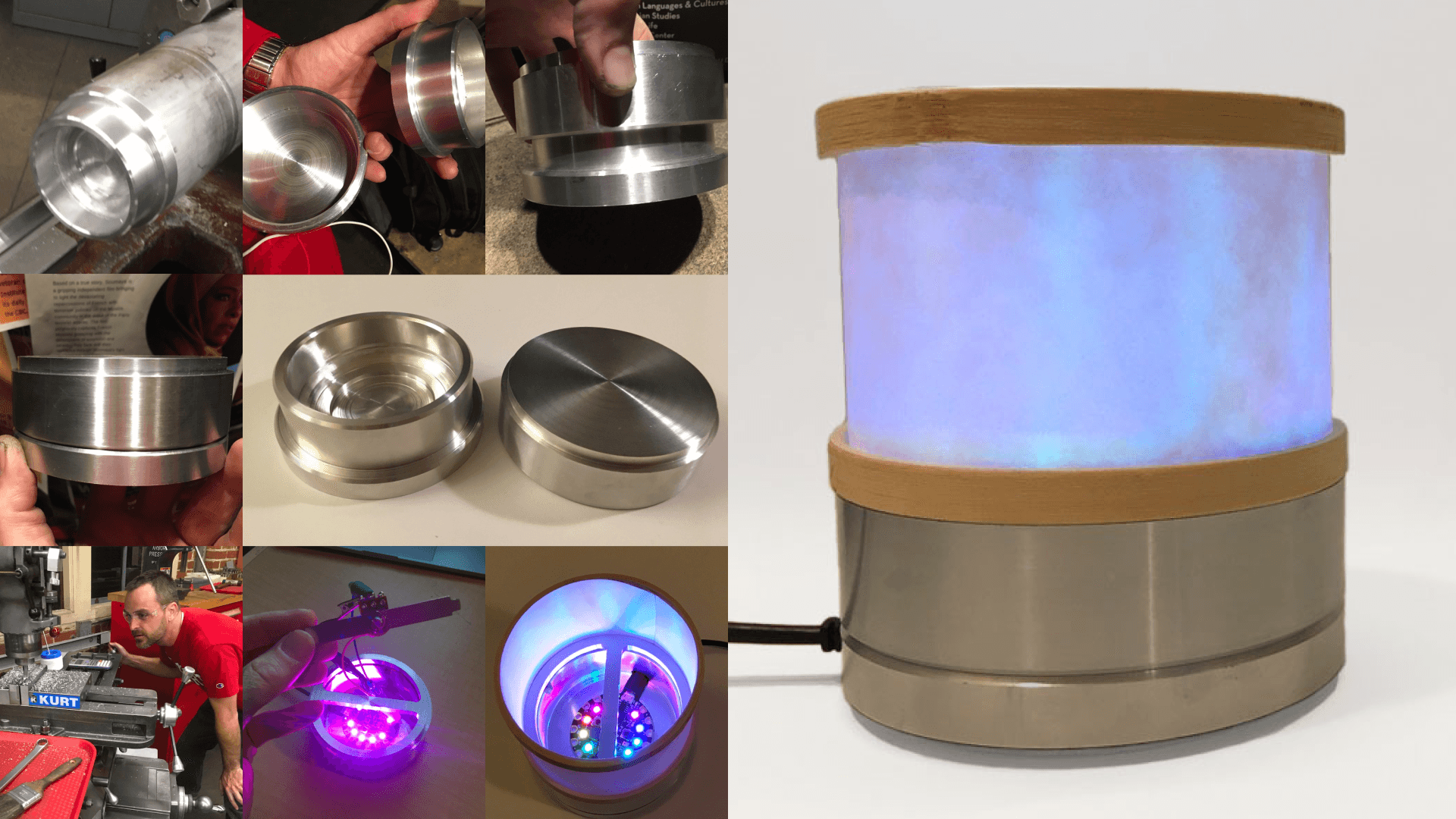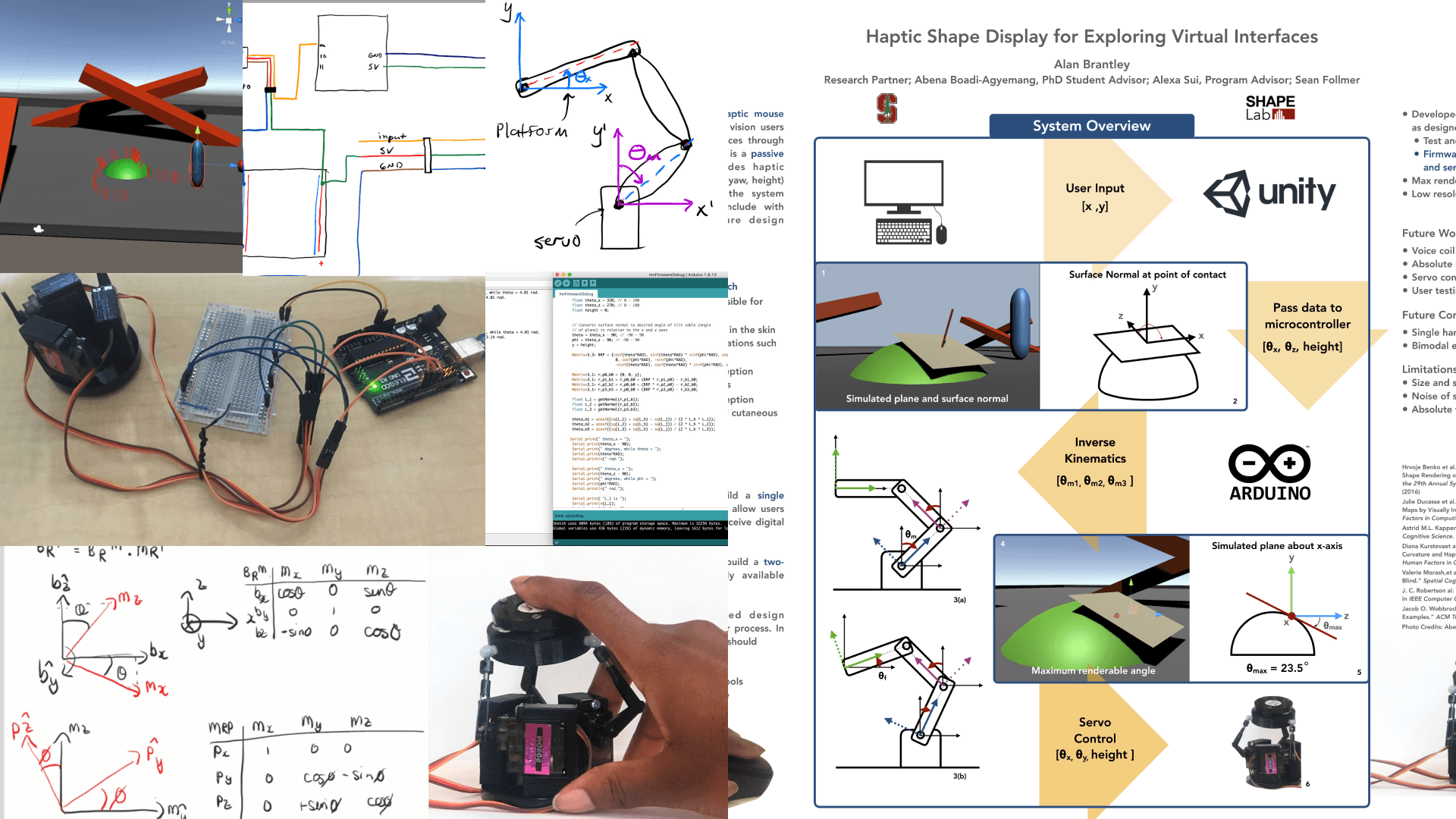
Making
Maker Spaces / Metal Shop / Wood Shop
Stanford Product Realization Lab
I got my first taste of making at Stanford's PRL. When I transferred my intended major was math. When I found out about the Product Realization Lab, my math education was over.
The PRL consists of a full capability metal shop, wood shop, foundry, and digital fabrication lab. I have experience with all of these areas, and gained proficiency in the metal shop and digital fabrication lab.
Lever Action Locking Device
Foundations of Product Realization
This project marked a pivotal moment in my academic journey, being the first instance of transforming a concept into a tangible product. Tasked with demonstrating proficiency in 3D modeling and digital fabrication, the goal was to design and construct a bi-stable mechanical device. The device needed to switch between two unique states and visually indicate its current state.

Portfolio
Below is an entry into my first design portfolio, created when I was applying for graduate school. I really was doing way too much. But it got me in. Press the button below to view the write-up on the Bi-Stable Mechanism.
Ilumenum
Product Realization: Design and Making
Inspiration and Pivot
The journey of this project was marked by significant challenges and adaptability. Initially envisioned as a pyramid lamp, the project took a new direction after being inspired by a previous student's work. This pivot led to the exploration of new skills, including learning how to turn metal on a lathe.
Design and Fabrication
The revised concept evolved into a cylindrical lamp designed to operate essentially like a knob, activating various states of the Playground Express Microcontroller as the user rotates. The base was crafted from 5-inch diameter aluminum stock, meticulously turned on the lathe. The cover rotator followed a similar process, with additional milling to create hollow features on the cover. The original plan for the shade involved kerfed balsa wood, intended to be stained to match an anodization process.

Adaptation Amidst Global Challenges
Unfortunately, our labs shut down before I could fully realize my vision. Thankfully, I had completed the day before the shutdown, and I was able to complete the project at home. I found some embroidery rings and made the shade from card stock.
Final Results
The final assembly of the two pieces was seamless, demonstrating excellent tolerances and a high-quality machine finish. The precision in craftsmanship resulted in components that fit together like butter, and along with the actuator, provided a very satisfying feeling when rotating the cover around the base.
To view a more detailed write-up on the project, click the button below.
Haptic Mouse
Stanford Undergraduate Research Institute | Shape Lab
During the summer of 2020, I collaborated with a partner and Stanford's Shape Lab on a project under the Stanford Undergraduate Research Institute. We aimed to develop a haptic mouse for Blind and Low Vision (BLV) computer users, addressing the challenges they face with traditional computer interfaces. My primary role was developing the firmware, creating a virtual environment in Unity to simulate varying terrains through tactile feedback. The project culminated in a poster presentation where I showcased the device's functionality and design, marking my first significant venture into visual design using Keynote.

Portfolio
To view a more detailed write up, click the original portfolio button below.
Book Mover
Mechanical Systems Design
This was a three-week project with two other group members. All work presented here is my own unless explicitly stated. This course was completed remotely because all Stanford Product Design Students had the luxury of having 3D printers delivered to our homes.

Objective and Build
The objective of the project was to construct a robot that could pull books behind it for 120 seconds. The competition was to see which team could pull the most weight in the least amount of time. While our robot performed well, it was not an optimal design, a fact I take responsibility for since it was the design I advocated for.
Quantitative Accounting
The report below is our final report. While we each contributed to the technical descriptions and calculations, each of us were required to compile and submit our own reports. Below is my submission.
IYA Creator's Studio
Iovine and Young's Creator's Studio is a state of the art maker space, with a metal shop, wood shop, Haas and table CNC's and a robust digital fabrication lab. In the two years I spent there I honed my fabrication skills while learning new ones as well.
Rolling Rope
Foundation Studio with Grant Delgatty
Rolling rope started as a 3 week assignment and evolved into a full semester, multi-course project. Visit the web portfolio page to learn more.

Mini Rim
CNC Mill Programming, Setup, and Cutting

Ilumenum II
CAD/CAM, CNC Mill, Microcontroller, 3D Printing

Back
Technologies
Sketching
CAD
Laser Cutter
3D Printer
Metal Lathe/Mill
Haas CNC
